Prescription Drug Plans
The basics of Medicare Part D. Medicare Part D prescription drug plans help to make prescription drugs more affordable.
Medicare Part D | Prescription Drug Plans
Medicare Part D plans provide coverage for prescription medication. Enrolling in a Medicare Prescription Drug plan can help make your prescribed medications costs more affordable. Part D coverage is only available through a standalone Prescription Drug plan or a Medicare Advantage plan with Part D included. This means that if you are currently only enrolled in Original Medicare, or Original Medicare plus a Medigap plan, you will not get help paying for your prescription medication and you will be responsible for covering the cost of your prescribed drugs.
Who’s eligible for a Medicare Prescription Drug Plan?
To enroll in a Part D plan you must be enrolled in either Part A or Part B of Original Medicare. To qualify for Original Medicare you must be 65 or over (and meet the residence requirements) or have been on Social Security Disability Income (SSDI) for at least 24 months. There are also exceptions for people who have been diagnosed with ERSD (End-Stage Renal Disease) or ALS (Amyotrophic Lateral Sclerosis).
ESRD Exception – You are eligible for Medicare no matter how old you are if you meet all of the following criteria:
- Your kidneys are no longer functioning
- You need regular dialysis treatments or have had a kidney transplant
- One of the following applies to you:
- You have worked the required amount of time under Social Security, the Railroad Retirement Board, or as a government employee
- You are eligible for or already received Social Security or Railroad Retirement benefits
- You are the spouse or the dependent child of a person who meets either of the requirements listed
- For more information please see Medicare.gov regarding End-Stage Renal Disease
ALS Exception – The 24-month waiting period is waived for Medicare coverage for disabled individuals medically determined to have Amyotrophic Lateral Sclerosis (ALS), better known as Lou Gehrig’s disease. The date of Medicare entitlement is based on the date of a diagnosis of ALS, or July 1, 2001, whichever is later. This provision affects both new and current beneficiaries.

Need help selecting a Prescription Drug Plan? Let us Help!
Donut Hole Expenses
Most Medicare Part D plans currently have a coverage gap known as the donut hole; this is the coverage gap between the Initial Coverage Limit and the Catastrophic Benefit Period. This means there is a temporary limit on what the drug plan will cover. The coverage gap begins after you and your drug plan have spent $5030 on covered drugs in 2024. This amount may change each year.
Donut Hole Changes for 2025
Starting in 2025, Part D out-of pocket cost will be capped at $2,000 for the year. You’ll also have the choice to pay your out-of-pocket cost in monthly payments over the year instead of when the costs happen.
When deciding between plans it is important to take into account multiple aspects such as the deductible, drug formulary, copays and the premium to find the right combination of benefits and costs to best fit your lifestyle.
Let us help you with that!

Do I have to have Medicare Part D coverage?
You do not have to have part D coverage BUT if you do not have some form of what is considered credible drug coverage you will be required to pay a late enrollment penalty when you do enroll in Medicare drug coverage after the 62 day grace period. You can get prescription drug coverage either through a stand alone Part D plan, as part of a Medicare Advantage plan, or through existing health insurance such as an employer sponsored plan. To prevent you from paying a late enrollment penalty your coverage must provide equal or better coverage than Medicare Part D plans. The Penalty for not enrolling in coverage when you are first eligible is 1% of the base premium for every month you weren’t covered, which is then added to each month.
PENALTY EXAMPLE:
If You First Qualified For Medicare At The Beginning Of Last Year And Missed A Full Year You’d Pay A Penalty For The Twelve Months Without Coverage. This Means You’d Have 12% Of The Base Premium For The Current Year Added To EVERY Month.
Are there any alternatives to Medicare Prescription Drug Plans?
Instead of choosing a stand alone Medicare Part D Plan you may prefer to enroll in a Medicare Advantage Plan that offers prescription drug coverage. Medicare Advantage Plans (known as Part C) provide coverage for Parts A, B and in many cases Part D.
When can I enroll in a Medicare Part D Plan?

7-Month Initial Enrollment Period | Begins 3 months before the month you turn 65
INITIAL ENROLLMENT PERIOD
You’re first eligible to enroll in a Medicare Part D plan during your initial enrollment period (IEP). Your IEP begins three months before the month of your 65th birthday, includes your birth month, and lasts for three months after your birth month. This gives you a total of 7 months to enroll in your plan of choice.
*Signing up for Parts A and B during months 5-7 may result in delayed coverage.
If you fail to sign up during this initial period you will have a yearly opportunity to enroll during the General Enrollment Period, which runs from January 1st to March 31st each year. Once you are enrolled in the Part A and/or Part B, you’ll have a yearly opportunity to enroll in Part D during the Annual Open Enrollment Period, which runs October 15th – December 7th every year.
SPECIAL ENROLLMENT PERIOD
Certain life changes trigger a Special Enrollment Period (SEP). This SEP allows you to enroll in a Prescription Drug Plan outside of the Annual Enrollment Period. You may be granted a SEP for numerous reasons including moving to a new address, entering or leaving a long-term care facility, leaving incarceration, losing existing coverage, and many more. Most Special Enrollment Periods last for 2-3 months but the duration may vary depending on the qualifying reason.
GENERAL ENROLLMENT PERIOD
If you miss your Initial Enrollment Period for Original Medicare you can enroll in Part A and/or Part B during the General Enrollment Period, which runs from January 31st to March 1st every year. If you enroll in Part A and/or Part B during this time, you’ll then be allowed to enroll in a Part D Plan between April 1st and June 30th. (Note: if you qualify for premium free Part A, you can enroll at anytime that you are eligible).
